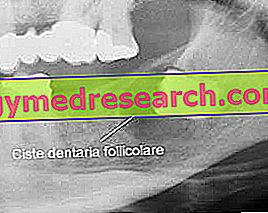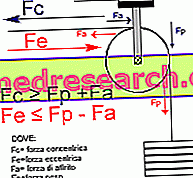Generality
The girito, or herpetic backbone, is a skin lesion located in the terminal part of the fingers of the hand, caused by an infection with herpes simplex virus (type 1 or type 2).

If the triggering infection is severe, the kidney may be responsible for high fever, severe pain in the infected area, confusion and loss of consciousness.
Very often, for a correct diagnosis of a girito, the physical examination and the anamnesis are sufficient.
Except in special cases, the girito spontaneously heals within 2-3 weeks.
What is the rotorhead?
The girito, or herpetic backbone, is a contagious skin infection, which causes a characteristic lesion on the terminal part of the fingers of the hand.
Typically, the most affected fingers are the thumb or forefinger.
See More Photo Giradito - Cutaneous Herpes
Causes
The causes of sweating are infections with herpes simplex virus type 1 and herpes simplex virus type 2 infections.
These two viruses are able to provoke the rotoray when, through a cutaneous wound in the fingers of the hand, they are able to come into contact with the body fluids and spread there.
HOW TO INFECTED?
An individual can develop the turntable in at least two ways:
- Touching an infected person with his hands.
- If bearer of cold sores or genital herpes, by manual contact with wounds present, respectively, on the lips or genitals. In this case, one speaks also of secondary infection.
Epidemiology
Most of the cases of whipping off are caused by herpes simplex virus type 1 infection.
The association between girito and cold sores or genital herpes is very common.
RISK FACTORS
They are risk factors of the rotorhead:
- Suffer from cold sores or genital herpes . As stated, touching the wounds caused by these two conditions with your fingers could spread the infection to the hand.
- Have frequent and close contact with people who have girditis, cold sores or genital herpes .
- Possess a weak immune system . The immune system is the body's defensive barrier, which is opposed to viruses, bacteria and other pathogens. A decrease in efficacy by the immune system predisposes to the development of numerous infectious conditions.
The causes that can lead to a weakening of the immune system include advanced age, HIV infection (AIDS), chemotherapy and the use of immunosuppressants.
- Obtain frequently, for example of a particular work activity, small cuts at the level of the fingers.
Symptoms and Complications
See also: Giradito symptoms
Highlighted at the level of the finger or fingers concerned, the symptoms and the signs of the giradito generally consist of: redness, burning sensation, sometimes uncontrollable itching, swelling under the nail, pain, heat sensation, presence of one or more blisters, formation of scabs and fluid leakage from the vesicle (s).
In some situations, the liner can cause enlargement of the lymph nodes of the hand or arm.
COMPLICATIONS
When the infection is particularly serious, or in case of failure to treat, the girito may induce the appearance of high fever, severe pain in the affected finger (s), confusion and / or loss of consciousness.
WHEN TO REFER TO THE DOCTOR?
In all those cases in which the girito has induced one or more of the aforementioned complications (high fever, severe pain, confusion and / or loss of consciousness), it is advisable to contact your doctor immediately or go to the nearest hospital to receive the more appropriate care
Diagnosis
Usually, a careful physical examination and a careful medical history are sufficient for a correct diagnosis of a roundhead.
If the baby is a recurring problem, it is likely that the doctor also decides to take a small sample of cells ( skin swab ) from the infection area, to be tested in the laboratory.
The analysis of the skin swab allows to plan a suitable therapy for the case, which is able to avoid the repetition of the infection.
IMPORTANCE OF THE ANAMNESIS
The anamnesis is important because it allows the doctor to go back to the causes of the giradita and to understand if the patient suffers from a cold sores or genital herpes.
The knowledge of the causes of the rotorhead allows to establish an effective cure.
Treatment
In general, the whitis heals spontaneously - so without the need for special treatments - within 2-3 weeks .
The use of specific treatments - in this case the administration of an antiviral drug known as acyclovir - occurs when the infection triggered, the kidney is severe and the symptoms do not seem to improve.
It is important to point out that, before using a drug like acyclovir, you should consult your doctor and rely on his advice.
IN THE PRESENCE OF A SERIOUS SYMPTOMS
If the symptoms of the kidney are particularly annoying or intense (medium-high fever, acute pain, etc.), doctors tend to advise:
- Intake of analgesics (ie pain medications), such as ibuprofen or paracetamol. These medicines mitigate pain and reduce fever.
- The application of anesthetics, such as lidocaine or prilocaine. These medicines reduce itching and a sense of pain.
Prognosis
In general, the root will disappear less than a month after its appearance.
For cases of giraditis resulting from cold sores or genital herpes, there is a real risk of recurrence, especially in the absence of treatments against the triggering conditions.
Prevention
To reduce the risk of developing the baby's bed, doctors recommend:
- Avoid contact with injuries resulting from cold sores or genital herpes.
- Wash your hands frequently.
- Practicing safe sex.
- If you practice a healthcare profession (dentist, nurse, etc.), always wear latex gloves.
- Avoid direct contact with people who have a family of lollipops.



